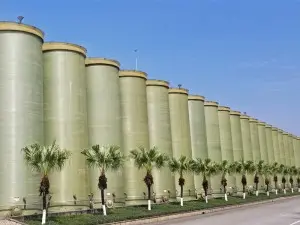
-
 Afrikaans
Afrikaans -
 Albanian
Albanian -
 Amharic
Amharic -
 Arabic
Arabic -
 Armenian
Armenian -
 Azerbaijani
Azerbaijani -
 Basque
Basque -
 Belarusian
Belarusian -
 Bengali
Bengali -
 Bosnian
Bosnian -
 Bulgarian
Bulgarian -
 Catalan
Catalan -
 Cebuano
Cebuano -
 China
China -
 China (Taiwan)
China (Taiwan) -
 Corsican
Corsican -
 Croatian
Croatian -
 Czech
Czech -
 Danish
Danish -
 Dutch
Dutch -
 English
English -
 Esperanto
Esperanto -
 Estonian
Estonian -
 Finnish
Finnish -
 French
French -
 Frisian
Frisian -
 Galician
Galician -
 Georgian
Georgian -
 German
German -
 Greek
Greek -
 Gujarati
Gujarati -
 Haitian Creole
Haitian Creole -
 hausa
hausa -
 hawaiian
hawaiian -
 Hebrew
Hebrew -
 Hindi
Hindi -
 Miao
Miao -
 Hungarian
Hungarian -
 Icelandic
Icelandic -
 igbo
igbo -
 Indonesian
Indonesian -
 irish
irish -
 Italian
Italian -
 Japanese
Japanese -
 Javanese
Javanese -
 Kannada
Kannada -
 kazakh
kazakh -
 Khmer
Khmer -
 Rwandese
Rwandese -
 Korean
Korean -
 Kurdish
Kurdish -
 Kyrgyz
Kyrgyz -
 Lao
Lao -
 Latin
Latin -
 Latvian
Latvian -
 Lithuanian
Lithuanian -
 Luxembourgish
Luxembourgish -
 Macedonian
Macedonian -
 Malgashi
Malgashi -
 Malay
Malay -
 Malayalam
Malayalam -
 Maltese
Maltese -
 Maori
Maori -
 Marathi
Marathi -
 Mongolian
Mongolian -
 Myanmar
Myanmar -
 Nepali
Nepali -
 Norwegian
Norwegian -
 Norwegian
Norwegian -
 Occitan
Occitan -
 Pashto
Pashto -
 Persian
Persian -
 Polish
Polish -
 Portuguese
Portuguese -
 Punjabi
Punjabi -
 Romanian
Romanian -
 Russian
Russian -
 Samoan
Samoan -
 Scottish Gaelic
Scottish Gaelic -
 Serbian
Serbian -
 Sesotho
Sesotho -
 Shona
Shona -
 Sindhi
Sindhi -
 Sinhala
Sinhala -
 Slovak
Slovak -
 Slovenian
Slovenian -
 Somali
Somali -
 Spanish
Spanish -
 Sundanese
Sundanese -
 Swahili
Swahili -
 Swedish
Swedish -
 Tagalog
Tagalog -
 Tajik
Tajik -
 Tamil
Tamil -
 Tatar
Tatar -
 Telugu
Telugu -
 Thai
Thai -
 Turkish
Turkish -
 Turkmen
Turkmen -
 Ukrainian
Ukrainian -
 Urdu
Urdu -
 Uighur
Uighur -
 Uzbek
Uzbek -
 Vietnamese
Vietnamese -
 Welsh
Welsh -
 Bantu
Bantu -
 Yiddish
Yiddish -
 Yoruba
Yoruba -
 Zulu
Zulu
fiberglass clarifier system for efficient water treatment and solid
Fiberglass Clarifier System for Efficient Water Treatment and Solid Separation
In the contemporary landscape of water treatment, environmental sustainability and efficiency are more important than ever. One innovative solution that has gained significant traction is the fiberglass clarifier system. This technology not only enhances water quality but also optimizes the separation of solids, making it an essential tool for various industries ranging from municipal wastewater treatment to industrial processes.
What is a Fiberglass Clarifier System?
A fiberglass clarifier system is a specialized equipment designed to facilitate the sedimentation process, where suspended solids in water are allowed to settle out of the liquid phase. Utilized primarily in water treatment plants, these systems are constructed from fiberglass-reinforced plastic, a material known for its excellent corrosion resistance, lightweight characteristics, and durability. This combination of physical properties makes fiberglass clarifiers an ideal choice for environments that may be harsh on traditional materials like steel or concrete.
The Working Principle
The operation of a fiberglass clarifier is based on the principles of gravity and buoyancy. Water with suspended solids enters the clarifier, flowing through an inflow chamber. As the water moves toward the settling zone, the velocity is significantly reduced, allowing heavier particles to sink to the bottom. Over time, the solids accumulate and form a sludge blanket. The clarified water, now free of a majority of contaminants, exits the clarifier through an outlet at the top.
This process significantly reduces the concentration of suspended solids and other impurities, ensuring that the water meets the necessary quality standards for discharge or further treatment.
Advantages of Fiberglass Clarifier Systems
fiberglass clarifier system for efficient water treatment and solid

1. Corrosion Resistance The primary benefit of fiberglass materials is their resistance to corrosion. Unlike metals that rust or corrode over time, fiberglass can withstand the aggressive nature of chemicals present in wastewater, resulting in lower maintenance costs and longer lifespans.
2. Lightweight and Easy to Transport Fiberglass clarifiers are significantly lighter than traditional counterparts. This characteristic simplifies transportation and installation, thereby reducing labor costs and time requirements.
3. Lower Energy Consumption The design of fiberglass clarifiers promotes efficient flow dynamics, which can lead to reduced energy consumption compared to other treatment methods. This not only translates to cost savings but also supports sustainable practices by lowering the carbon footprint of water treatment facilities.
4. Versatile Applications Fiberglass clarifiers are suitable for a wide range of settings, including municipal wastewater treatment plants, stormwater management systems, and industrial settings. Their adaptability makes them a preferred choice for various water treatment applications.
5. Improved Performance Advanced design features, such as integrated skimmers and sludge removal systems, enhance the performance of fiberglass clarifiers, ensuring efficient operation and consistent water quality.
Conclusion
The implementation of fiberglass clarifier systems represents a significant advancement in the field of water treatment and solid separation. By leveraging the inherent benefits of fiberglass materials, these systems provide a cost-effective, efficient, and sustainable means of treating water. As industries and municipalities continue to grapple with the challenges of water quality and environmental compliance, the adoption of fiberglass clarifiers will likely expand, paving the way for a cleaner and more sustainable water future.
As we move forward, it is essential to continue investing in innovative technologies like fiberglass clarifiers that align with global goals of sustainability and effective resource management. Only through such advancements can we ensure the availability of clean water for future generations.
Latest news
-
Exploring the Benefits of Top Hammer Drifter Rods for Enhanced Drilling PerformanceNewsJun.10,2025
-
High-Precision Fiberglass Winding Machine for GRP/FRP Pipe Production – Reliable & Efficient SolutionsNewsJun.10,2025
-
FRP Pipes & Fittings for Shipbuilding - Corrosion-Resistant & LightweightNewsJun.09,2025
-
Premium FRP Flooring Solutions Durable & Slip-ResistantNewsJun.09,2025
-
Premium Fiberglass Rectangular Tanks Durable & Lightweight SolutionNewsJun.09,2025
-
Tapered Drill String Design Guide Durable Performance & UsesNewsJun.09,2025









